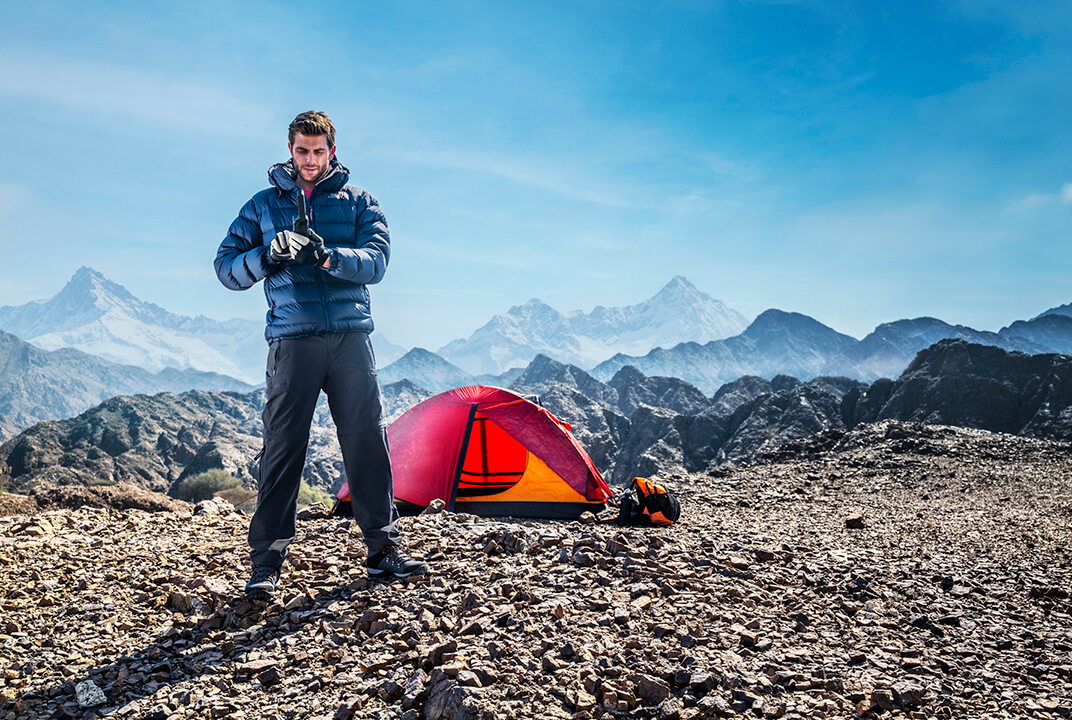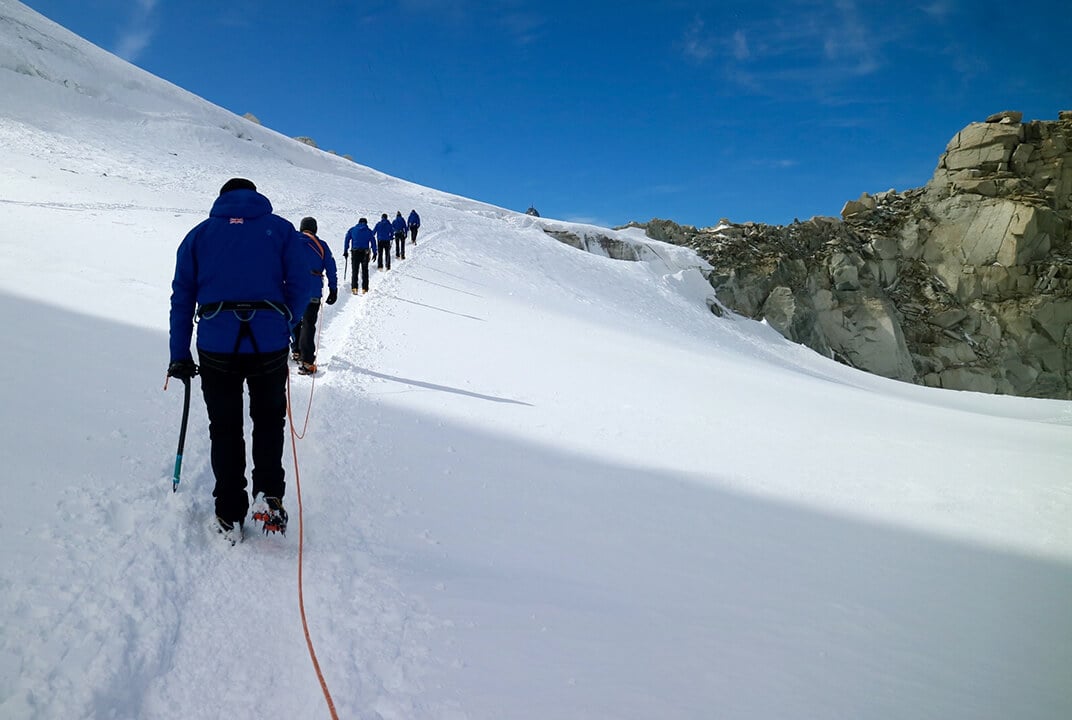Insight | Proving there is life beyond injury
Proving there is life beyond injury
Government
Denali was an uncompromising and demanding expedition at a serious altitude with extreme conditions and potential outcomes. It tested the resolve of everyone on the mountain, not just the 65 Degrees North (65DN) team. It tested fitness, knowledge, leadership and technology to its limits. Denali was the culmination of all four previous 65DN expeditions and in particular the three other summits – Kilimanjaro, Vinson and Aconcagua.
As ever, the satellite equipment our communications partner Inmarsat delivered was critical to the Denali climb in June. Satellite connectivity provides us with live weather reports both locally and from UK sources, and greatly enhances our safety and wellbeing as it gives us quick access to our doctors for advice and any fast-track information needed for decision-making to accommodate changing situations. When you are in the most hostile environment with no other way of making contact, finding you have full Wi-Fi is a game changer! There is a stark change in the guys’ morale – being able to stay in touch really is a source of comfort and reassurance. To be able to read the messages of support on Facebook at the end of a long, hard day on the mountain has such a positive impact on the team.
It is also key to keeping sponsors, followers and family fully updated in real-time, as well as giving us the ability to conduct live radio interviews, ensuring wider exposure of our projects.
On the Denali expedition, the importance of reliable communications was forcefully brought home when contact was lost with two Norwegian climbers from a different group. We were quick to offer our Inmarsat kit to call for help but fortunately they were located safe and well 17,000ft up at High Camp.
Importance of reliable communications
Everyone’s resolve was put to the test when ferocious weather left us tent-bound at 14,000ft for several days. It was soul-destroying not knowing if we would have the opportunity to reach the summit, and seeing the majority of the other groups make the difficult decision to descend. However, it gave the team the opportunity to catch up with messages on social media, and even build a snowman at the request of the children at one primary school who had been following our progress!
Low points and high points
That low ebb was swiftly followed by elation when on 25 June, after three weeks of being pushed to our limits, all five of the team – myself, 65DN returner Brendan Davies, former Royal Marines Scott Ransley and Jonnie Miller, and Lieutenant Colonel Joe Winch reached the summit of the highest peak in North America, and tallest land-based mountain on Earth[1].
The skies cleared and the sun came out allowing us to enjoy the spectacular scenery all around us. We spent about an hour on the summit taking photos and making phone calls on our IsatPhone 2 to inform the support team and reassure loved-ones back home that we had made it!
Giving veterans a goal to aim for
I think Joe, who was diagnosed with complex post-traumatic stress disorder (PTSD) in 2017, best sums up what we are trying to achieve with 65DN:
“Life since coming home has been totally different – for the better. The journey hasn’t cured me, but it’s given me a whole new perspective on life, new confidence, self-esteem and memories. It’s so much easier being at home and with my kids now – an almost unbelievable transformation!”
These expeditions provide our wounded, injured and sick servicemen and women with the opportunity to push themselves physically and mentally, aiding and enhancing their recovery and rehabilitation, and proving there is life beyond injury. Taking part gives them a focus and a goal to aim for, provides them with opportunities to learn new skills, lets them be around like-minded people and part of a team again, increasing their confidence and motivation and creating a platform to showcase their achievements and inspire others.
So what’s next for 65DN? Well, in October a small team will be taking to the saddle to cycle Munda Biddi in Western Australia, at over 1,000km the longest off-road cycling trail in the world.
And we are planning our next big mountain for 2019: Everest!
[1]There is a distinction between measuring “highest” and “tallest.” The highest mountain is determined by measuring a mountain’s highest point above sea level. The tallest mountain is measured from base to summit. Using that measurement, Denali is taller than Mount Everest. Denali rises about 18,000 feet (5,500 meters) from its base, which is a greater vertical rise than Everest’s 12,000-foot rise (3,700 meters) from its base at 17,000 feet (5,200 meters).
About the author
Richard Morgan is a former Royal Marine Commando trained in Arctic and desert warfare and survival. Rich saw how extreme challenge can aid rehabilitation when he led Heroes Challenge UK, a 10-day endurance record, and the 2014 expedition that saw Peter Bowker become the first amputee to cross the Greenland ice cap unsupported. Through 65 Degrees North, which has the support of the Endeavour Fund, he has supported wounded and damaged veterans climb Kilimanjaro, Vinson and Aconcagua. In 2018 Rich was awarded an MBE in recognition of his charitable services to veterans.


